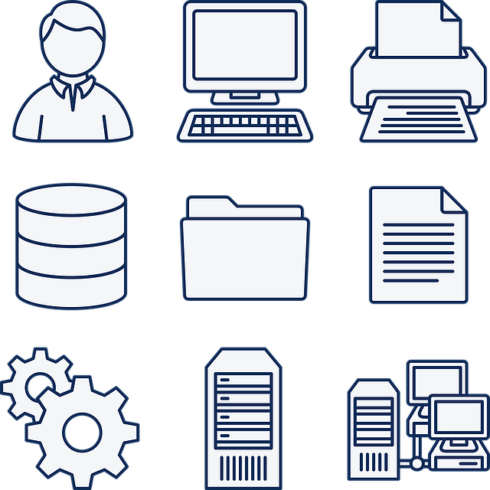
Since COVID-19 took hold as a global pandemic, we have seen a lot of focus in the United States on improving our healthcare supply chain, by eliminating barriers to coordination among the many parties needed to source, build, transport and sell pharmaceuticals and equipment that medical professionals need.
There’s no simple fix available here. Supplier relationships must be renegotiated or replaced, and existing facilities repurposed or built over from scratch, at great cost. Money and expertise may not be readily available to coordinate the changes needed.
In the software industry, we tend to think of constraints in project management terms: with productivity or features delivered, as governed by a budget function of time and resources, minus failures. Feed plans and component ‘designs and materials’ in one end of the software factory, and depending on how many skilled developers and testers are working together over time, excellent software ‘products’ roll out the other end.
Valuable innovation has never been achieved by treating the development shop like such a factory. This is why Agile methodologies were born, and the DevOps movement later took hold, to enable greater collaboration and buy-in, higher levels of customer-centricity and quality, and an automation mindset that accelerates delivery.
The software supply chain — coordinating a complex web of the right people, systems and data, all contributing at the right time to deliver software for customers — is now experiencing its own Black Swan moment in these unprecedented times.
Freeing teams for remote work, and forever abandoning live scrums and late-night Ops war-rooms won’t get us there by itself either. This useful trend was already in the works anyway, as many of the most successful startups of the last decade have relied on virtual teams of global talent to outpace geo-centric competitors.
It also doesn’t matter that instead of real boxes and containers, we’re moving ones and zeroes around in virtualized containers, with applications and services running on ever-more ephemeral cloud infrastructures.
The software supply chain may still have ineffable constraints in common with supply chains of other industries, besides time and resources.
1. Liquidity. This is the #1 issue for any other supply chain — how efficiently does money flow through the system? Whole suites of financing, factoring and settlement solutions try to solve this in the conventional supply chain world, where margins are thin and the time value of money is critical.
In today’s SaaS and cloud-based IT world, customers buying on a monthly (MRR) basis may ask for leniency during a crisis, when funding for innovative new ventures is scarce. Partners will also be asked to step up and ease the burden. Budgets aren’t idealistic exercises for accountants to deal with anymore, as IT executives will become more conscious of cash flow than ever.
2. Collaborative forecasting. Supply-and-demand forecasting is never an internal exercise — it requires analysis, requests and promises among all parties before orders are issued and goods assembled and delivered.
Any IT business unit would do well to evaluate its own ability to not only forecast customer demand, but understand the readiness of all of its services partners, component software vendors and infrastructure providers to successfully deliver on customer promises.
3. Inventory and WIP. Most ‘real’ companies maintain inventory buffers of both parts and finished goods, as well as a certain amount of work-in-process (WIP) in order to deal with volatile supply and demand, which represents an ongoing cost of business.
While the DevOps movement has it right that technical debt is a primary bottleneck to progress, there’s still a lot of code and software that has productive value and can’t possibly be replaced, especially if it is maintained by other parties. To top it off, the modernization work itself is inventory in the pipeline.
4. Quality and compliance. Meeting standards and delivering products that work as promised to meet SLAs and internal SLOs that avoid customer churn, penalties and risk is universal to all industries.
5. Life cycle service. In the automotive industry, it’s assumed that 60% or more of the total cost paid by customers for a vehicle will be spent on fuel, maintenance and parts, and not the initial purchase – so the necessity of capturing customer support and service revenue is more important than ever for software, even if some of that work is conducted by valued partners.
The Intellyx Take
These constraints seem like old hat to an old supply chain hack. Not that supply chain software vendors avoid hoarding inventory better than the rest of the software world — most wouldn’t retire a product even if it has one remaining install in a china factory in Timbuktu.
In all industries, the profitability of upgrading an existing customer is three to five times higher than that of capturing a new one. This is why some vendors take a pause on new deals or projects in favor of eliminating constraints in their software supply chains to deliver for existing customers.






